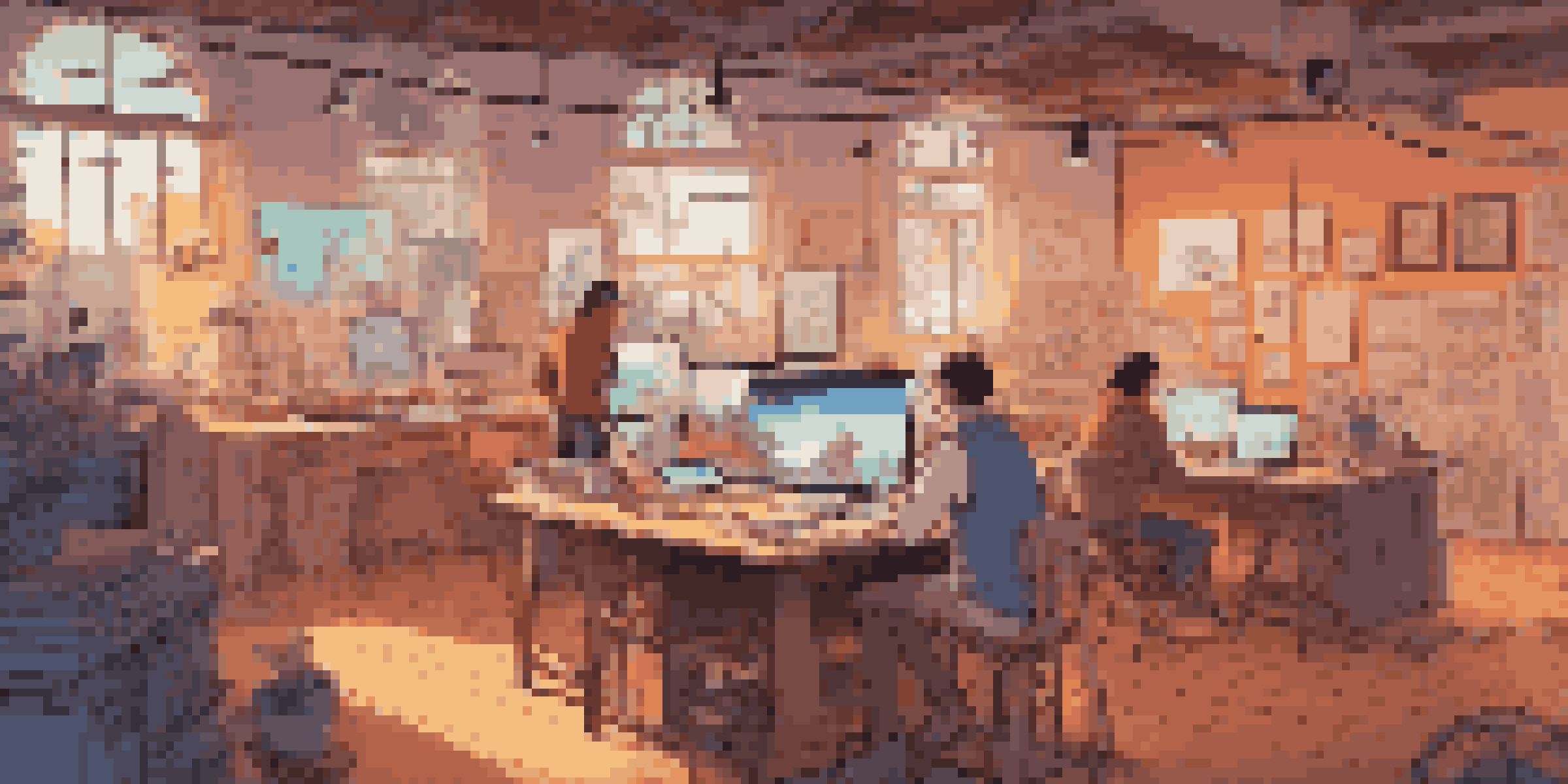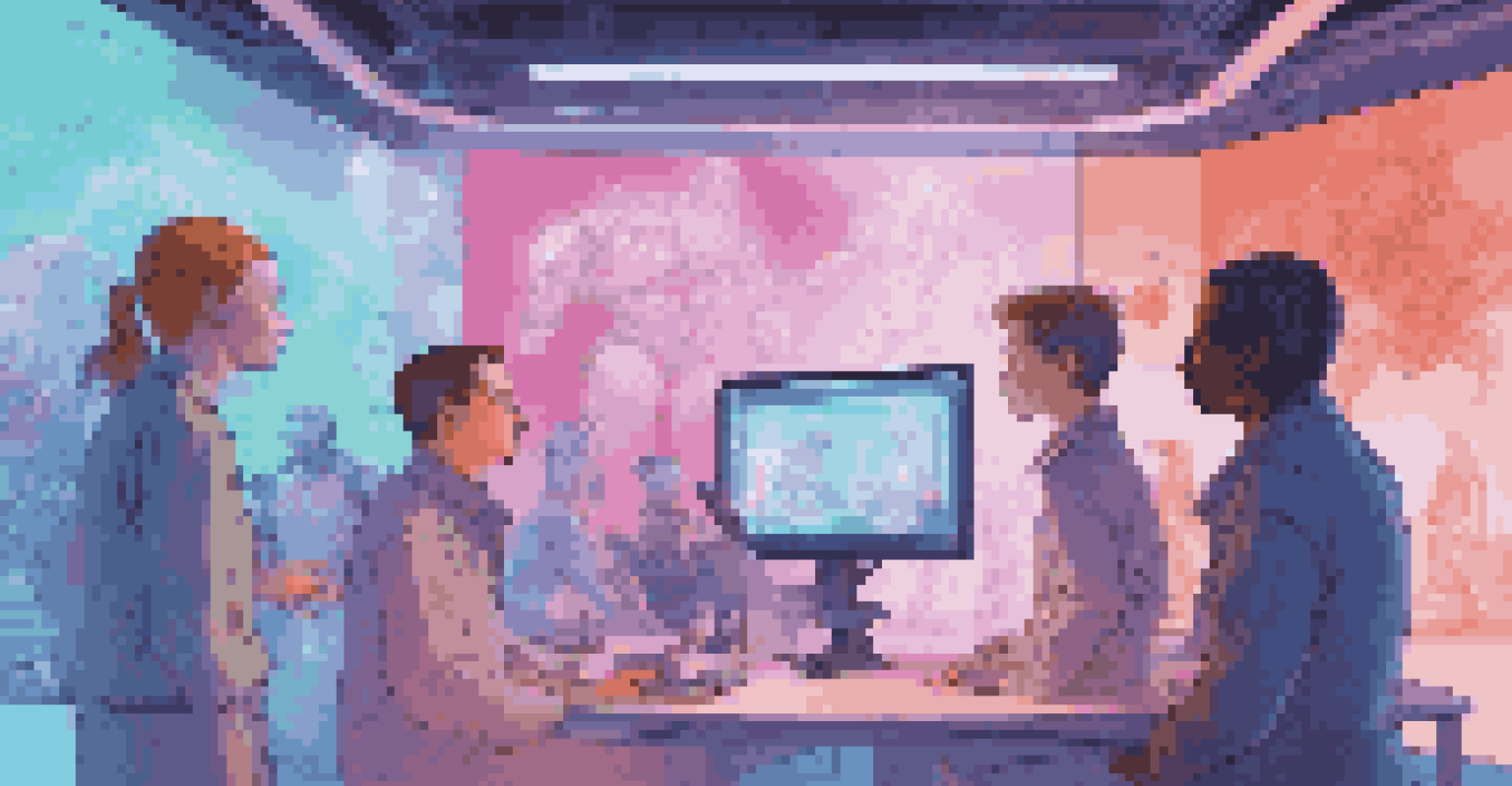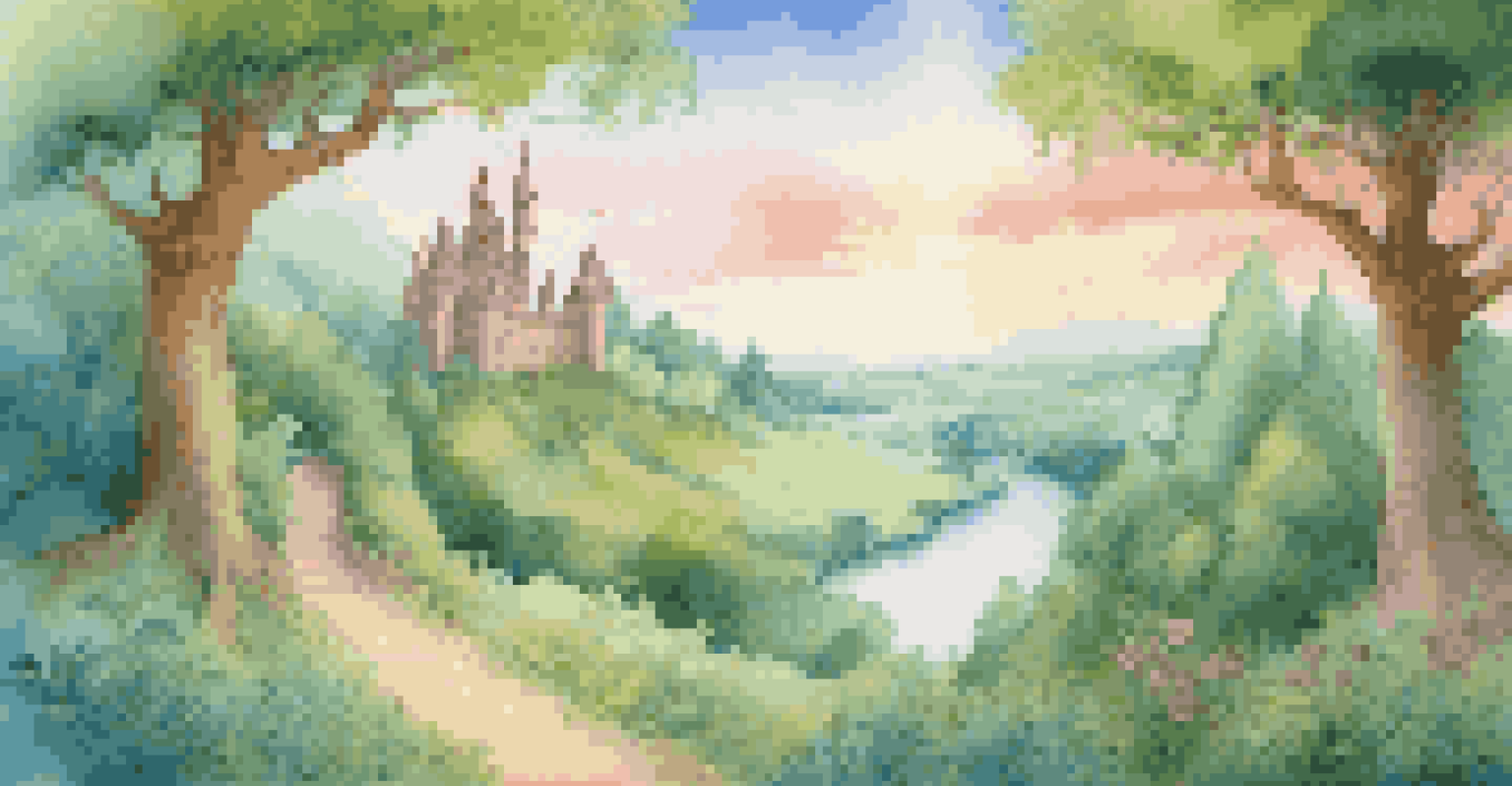Artificial Intelligence in Animation: A New Creative Frontier

Understanding AI's Role in Animation Creation
Artificial Intelligence, or AI, is swiftly transforming the animation landscape. By automating repetitive tasks, AI allows animators to focus on the creative aspects of their work. This means more time for storytelling and character development, which ultimately leads to richer animations.
Artificial Intelligence is the new electricity.
For instance, AI can assist in generating background animations or even in creating realistic facial expressions. This technology analyzes vast amounts of data to mimic human-like movements, making characters more relatable. As a result, the animation process becomes not only faster but also more intuitive.
Moreover, AI tools can learn from previous animations, improving their outputs over time. This capability allows animators to explore new styles and techniques that they might not have considered otherwise. Thus, AI stands as a powerful ally in the creative process, pushing the boundaries of what’s possible.
Enhancing Storytelling Through AI Innovations
One of the most exciting aspects of AI in animation is its ability to enhance storytelling. By analyzing viewer preferences and reactions, AI can suggest plot points or character arcs that resonate more with audiences. This data-driven approach allows animators to craft stories that are not only engaging but also tailored to their audience.

For example, AI can analyze scripts and provide feedback on pacing and emotional impact. This can help writers refine their narratives before they even reach the storyboard phase. The result? A storyline that keeps viewers hooked from start to finish.
AI Boosts Animation Creativity
AI automates repetitive tasks, allowing animators to focus more on storytelling and character development.
Additionally, AI can simulate different storytelling styles, enabling creators to experiment without extensive rework. This flexibility encourages innovation, leading to unique narratives that stand out in a crowded market. In essence, AI serves as a creative partner, enriching the storytelling process.
AI-Powered Animation Tools: A Game Changer
The rise of AI-powered animation tools has democratized the animation process, making it accessible for creators of all skill levels. Software like Adobe Animate and Blender are now incorporating AI features, allowing hobbyists and professionals alike to bring their visions to life. This shift lowers the barrier to entry, inviting more diverse voices into the animation space.
The great thing about AI is that it can augment human creativity, not replace it.
These tools can automate tasks such as lip-syncing, in-betweening, and even character rigging, which traditionally required significant time and expertise. By streamlining these processes, animators can produce high-quality work more efficiently. This efficiency doesn't just benefit individual creators; it also allows studios to take on more ambitious projects.
As a result, we are witnessing an influx of creative content, from short films to full-length features. This surge not only enriches the animation landscape but also inspires a new generation of storytellers. With AI tools at their disposal, the possibilities seem limitless.
The Impact of AI on Animation Styles and Techniques
AI is not just about efficiency; it’s also a catalyst for innovation in animation styles and techniques. By analyzing trends and audience preferences, AI can identify emerging styles, pushing animators to experiment and adapt. This encourages a vibrant landscape where traditional and modern techniques can coexist and thrive.
Consider how AI has helped introduce more fluid animation styles, such as those seen in popular web series and games. These styles often require extensive manual work, but AI can simplify the process, making them more achievable for smaller teams. This democratization of animation styles leads to a richer tapestry of visual storytelling.
AI Enhances Collaborative Efforts
AI facilitates smoother communication within animation teams, ensuring cohesive final products through data analysis.
Furthermore, AI's ability to learn from existing animations means that it can suggest new artistic techniques based on what has worked in the past. This blend of tradition and innovation can lead to groundbreaking visual experiences that captivate audiences worldwide. In this way, AI is reshaping not only how animation is produced but also how it is perceived.
Challenges and Limitations of AI in Animation
While AI presents exciting opportunities, it also comes with its own set of challenges and limitations. One major concern is the potential for over-reliance on technology, which could stifle human creativity. If animators lean too heavily on AI tools, they might miss out on the unique artistic flair that comes from human touch.
Another challenge is the risk of homogenization. With AI analyzing and suggesting trends, there’s a possibility that many animations could start to look and feel similar. This could lead to a lack of diversity in storytelling and visual aesthetics, which is essential for a thriving creative industry.
Moreover, the ethical implications of AI-generated content are still being debated. Questions around ownership, copyright, and the potential for misuse are crucial to consider. As the industry continues to evolve, addressing these challenges will be key to ensuring that AI serves as a complement to human creativity rather than a replacement.
AI in Animation: A Tool for Collaboration
AI is proving to be an incredible tool for collaboration within animation teams. With its ability to analyze and organize vast amounts of data, AI can facilitate smoother communication between different departments, from storyboarding to post-production. This interconnectedness helps ensure that everyone is on the same page, leading to more cohesive final products.
For instance, AI can help visualize how changes in one area of production impact others. If a storyboard artist makes a significant change, AI can quickly assess how that affects the animation timing, sound design, and overall narrative flow. This transparency fosters a collaborative environment where ideas can be shared and refined more effectively.
AI Shapes Future Animation Styles
By identifying trends and suggesting techniques, AI encourages innovation and the exploration of new animation styles.
Ultimately, AI enhances teamwork by allowing animators, writers, and directors to focus on their strengths. Instead of getting bogged down by technical details, they can channel their energy into creativity and innovation. This synergy between human talent and AI capabilities is poised to define the future of animation.
The Future of Animation: AI's Lasting Influence
As we look ahead, it’s clear that AI will continue to play a pivotal role in the evolution of animation. From creating more immersive storytelling experiences to enhancing collaboration among teams, the potential is vast. This influence will likely lead to new genres and styles of animation that we can't yet imagine.
Moreover, as AI technology continues to advance, we may see even more sophisticated tools that can further streamline the production process. These innovations could allow for real-time feedback and adjustments, making the animation process more dynamic. The result could be an even more engaging viewer experience, with stories that resonate deeply.

In the end, the fusion of human creativity and AI capabilities holds the promise of a vibrant future for animation. As animators embrace these new technologies, they will have the chance to tell stories in ways that are not only innovative but also profoundly impactful. It’s an exciting time for the industry, and the journey has just begun.